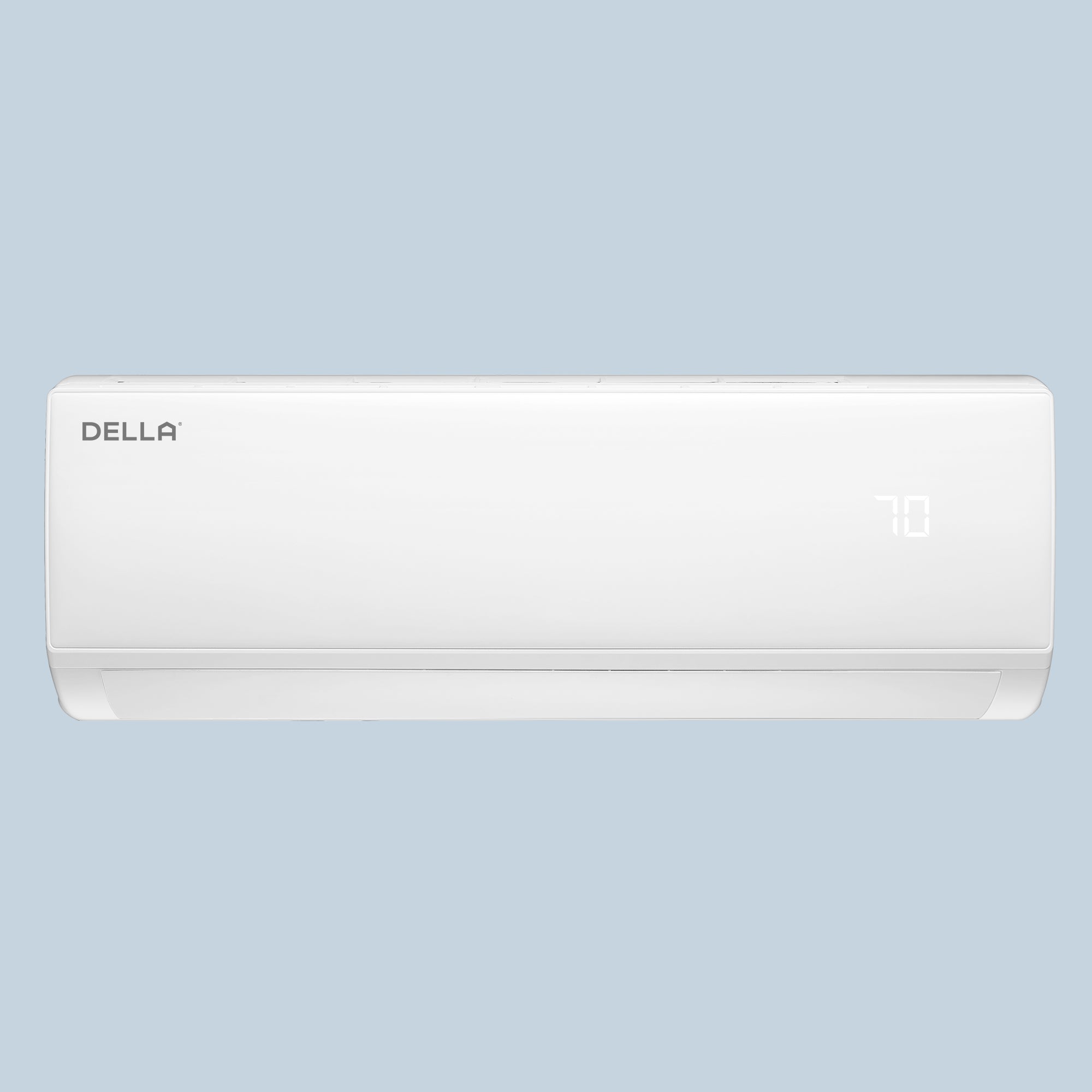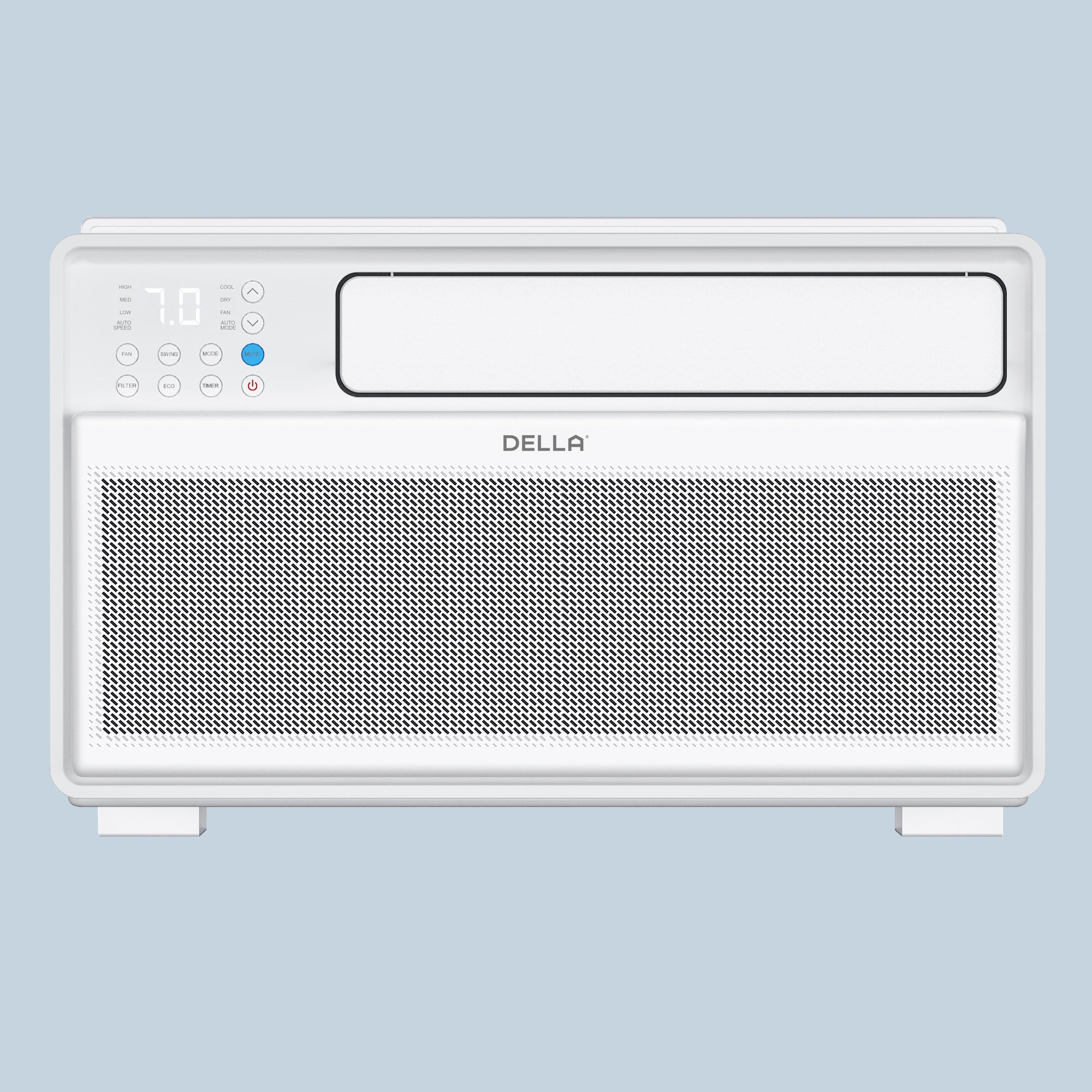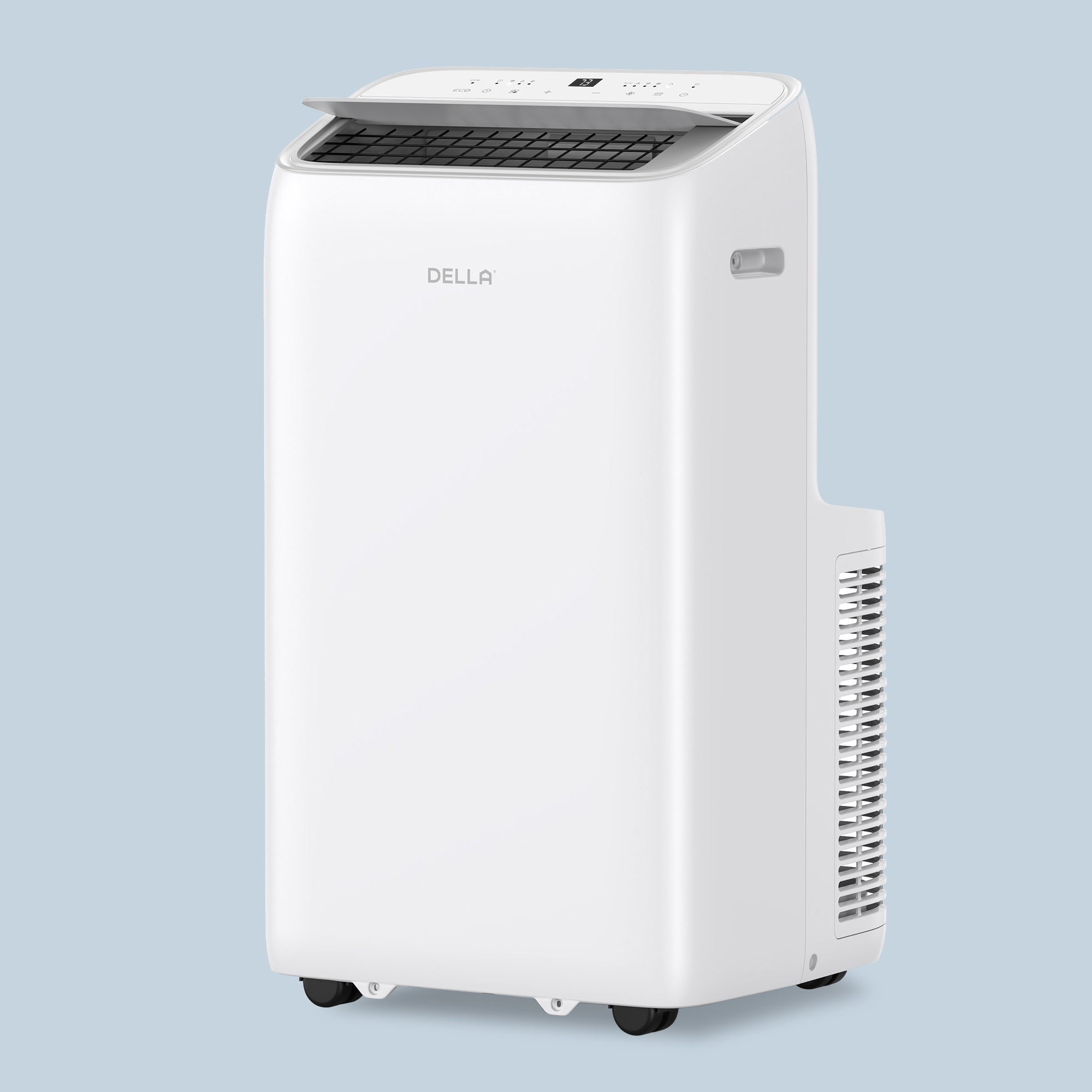The relentless hum of a traditional window air conditioner can be the enemy of relaxation. Fortunately, there are many innovations for your quiet comfort, such as quiet window air conditioners.
Today, brands like Dellahome ensure powerful cooling without the disruptive roar. This helps to make your space into a true sanctuary of serenity. This article is about quiet window air conditioners, how they work, and how to maintain them. So, read the article carefully if you opt for a noiseless AC.

What is a Window AC?
A window air conditioner is a self-contained cooling system that fits within a standard window opening.
Unlike central air conditioning, a window AC houses all its critical components—the compressor, condenser, evaporator coil, fan, and controls—in a single metal cabinet.
Its key appeal is its low cost and ease of installation in single rooms. They are also useful for chilling apartments, bedrooms, home offices, and other smaller living spaces.
Small window AC units provide compact alternatives for individuals with limited space while maintaining performance.
While a typical older window air conditioner may operate at 55-60 dB or higher, the quietest versions have amazingly low noise levels.
At their quietest settings, they frequently fall into the low 40s dB(A) range. Look for systems that advertise "quiet" or "silent" operation and explicitly indicate the dB values.
What Makes a Window Air Conditioner Quiet?

Advanced Compressor Technology
Inverter-driven compressors are an important component of quiet air conditioners. This inverter technology allows the compressor to run continuously while varying its speed.
It gradually ramps up to the desired temperature, then regulates its power to sustain it. As a result, it avoids the jarring start-stop cycles while greatly reducing overall operational noise.
Some variants also feature scroll compressors, which are known for being quieter than previous piston compressors.
Optimised Fan Design and Speed Control
Quieter units feature larger diameter fans with blades. These blades move more air with fewer revolutions per minute (RPM) to generate less noise. Variable-speed fan motors complement this. It helps the fans spin slower when full cooling power isn't needed, reducing sound levels.
Sophisticated Vibration Dampening and Insulation
Premium quiet models use heavy-duty insulation around the compressor compartment, which absorbs sound waves before they escape the cabinet.
Internal frames often feature rubber grommets, which isolate the compressor and fan assembly and prevent vibrations from resonating through the entire unit and the building structure. Also, high-density foam linings within the cabinet absorb internal sound reflections.
Thoughtful Cabinet Design
The entire outer shell plays a role. Their robust metal construction is less prone to rattling or amplifying internal noises. Also, the sealed seams and tight-fitting panels prevent buzzes. Thus, they ensure airflow is directed efficiently without unnecessary whistling or rattling.
Top Contenders for the Quietest Window ACs (2025)
Here are three standout performers with exceptionally low noise levels:

14,000 BTU Smart Window AC
The 14,000 BTU Smart Window AC is engineered for larger spaces up to 700 sq. ft. It features app control and a variable-speed inverter compressor, which minimizes operational noise. Its advanced vibration-damping ensures cooling power never compromises tranquillity.
10,000 BTU Smart Inverter Window AC
The 10,000 BTU Smart Inverter Window AC shines with ultra-quiet performance for medium-sized rooms up to 440 sq. ft. Its optimised fan blades and sound-absorbing materials make it ideal for bedrooms or home offices.
8,000 BTU Smart Inverter Window AC
The 8,000 BTU Smart Inverter Window AC excels in smaller spaces up to 350 sq. ft. Its compact design houses whisper-quiet technology. It includes a low-RPM fan and insulated compressor compartment, so it is perfect for creating a peaceful environment in apartments or studies.
Explore more options in Dellahome’s full range of high-efficiency window air conditioners.
How To Choose The Right Air Conditioner For Your Needs
Room Size is Paramount
Measure your room's square footage accurately. Use BTU (British Thermal Unit) capacity guides based on your room size, factoring in sunlight, ceiling height, and occupancy. Matching BTUs to room size is crucial for effective cooling and quieter operation.
Prioritise Decibel Ratings
Carefully compare manufacturers' sound level ratings (dBA), especially the lowest setting. Look for units advertising "Quiet," "Ultra Quiet," or "Silent" modes with dB levels in the low 40s. Remember, a difference of 10 dB is perceived as roughly twice as loud. So, even a few decibels lower makes a significant difference.
Embrace Inverter Technology
In 2025, an inverter-driven compressor is non-negotiable for the quietest operation. Their ability to run at lower speeds is fundamental to achieving near-silent cooling.
Consider Smart Features
Smart features like Wi-Fi connectivity let you turn the unit on remotely before arriving home. Thus, you can cool it gently rather than needing a noisy blast upon entry. Scheduling ensures it's only running when needed. Voice control adds convenience without searching for the remote.
Energy Efficiency Matters
Look for a high Energy Efficiency Ratio (EER) or the newer Combined Energy Efficiency Ratio (CEER). A more efficient unit consumes less electricity, saves money, and reduces environmental impact. The ENERGY STAR label is a reliable indicator of high efficiency.
Installation and Fit
Ensure the unit physically fits your window type and opening. Proper installation is critical not only for safety but also for minimizing noise. A poorly installed unit can vibrate excessively. Follow the manufacturer's instructions meticulously or hire a professional.
Maintenance Tips to Keep It Quiet
Clean or Replace the Air Filter Regularly
This is the most critical maintenance task. A clogged filter will increase noise levels and reduce efficiency. Check it every two weeks during heavy use and clean (if washable) or replace.
Seasonal Deep Cleaning
Built-up dirt on the coils makes the compressor work harder and louder. Give your unit a more thorough cleaning at the start and end of each cooling season. Ensure all vents are clear of obstructions.
Check and Tighten Components
Check that all screws, bolts, and mounting brackets are tight. Ensure the unit is securely seated in the window frame. Also, the side panels should be tightly sealed.
Clear the Drainage Path
Ensure the drainage holes or channels are clear of debris. Blocked drainage can cause water to slosh or drip and create noise.
Professional Tune-up
You should also hire a technician to service your unit every few years. They can clean coils thoroughly, check refrigerant levels, inspect electrical components, and ensure everything operates optimally and quietly.
Conclusion
Investing in a silent window air conditioner is about more than simply comfort. It is about restoring the serenity and calm of your home. The days of enduring the annoying roar of a window air conditioner are mercifully numbered.
Carefully match BTUs to room size, and pay particular attention to decibel ratings. Also, ensure necessary maintenance. Thus, you can get the ideal balance of powerful cooling and delightful silence.
Cost To Install Mini Split Air Conditioning System








LEAVE A COMMENT
All comments are moderated before being published.
This site is protected by hCaptcha and the hCaptcha Privacy Policy and Terms of Service apply.